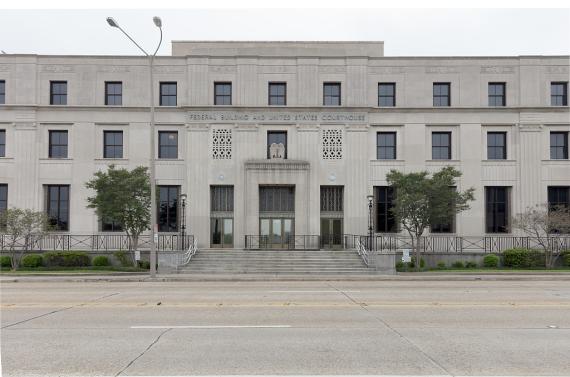Location: 777 Florida St, Baton Rouge, LA 70801
Significance

The Baton Rouge Federal Building and U.S. Courthouse is significant because it is a symbol of the federal presence in Baton Rouge, and it is representative of the federal building programs of the 1930s. The building sits at the corner of Florida and 7th Streets on property that has been government property - first, state; then, federal - since 1835. In 1832, the state of Louisiana passed an act to begin construction of a state penitentiary in Baton Rouge. The state purchased eight acres from Raphael Legendre and John Buhler for $800 in the Devall Town area of Baton Rouge. A prison was constructed on the site with the lower cell house, containing the keeper’s quarters and the main entrance, being at the corner of Florida and 7th Streets. At the time the prison opened, the state purchased the adjoining eight acres which was incorporated into the penitentiary grounds.
The property was occupied by Union forces in 1862 and was extensively damaged in the Battle of Baton Rouge on August 5, 1862. The prisoners moved back to the complex in 1867 and began repairs. The property was never completely rehabilitated, however, and the penitentiary was demolished in 1917. The city of Baton Rouge purchased the property from the state and it was turned into a community park. A community center was built in the park and, in 1920, an American Legion building was constructed at the corner of Florida and 7th. In 1932, the building was moved eastward to allow construction of the Federal courthouse, designed by local architect Moise Goldstein. Jens Braae Jensen served as structural engineer for the project. In 1966 a new post office facility was built across Florida Street and in 1990 a new federal building was constructed on the property adjacent to the 1932 courthouse. These three buildings form a “Federal Complex” and are significant symbols of the federal presence in Baton Rouge.
The passage of the Public Buildings Act of 1926 precipitated a period of building construction that was unprecedented in the United States. The Public Buildings Act specified that the office of the Supervising Architect of the Department of the Treasury would be responsible for the design and construction of all public buildings. Due to the failure of over half the nation’s architectural and construction firms in the Depression, many of these buildings were designed and constructed by local firms, as was the Baton Rouge building. Many of the federal buildings of this period exhibit streamlined design and lavishly finished interiors featuring marble and aluminum trim, and well-appointed courtrooms.
Building Facts
- Architect: Moise Goldstein
- GSA Building Number: LA0006BT
- Landmark Status: Listed in the National Register of Historic Places

 U.S. General Services Administration
U.S. General Services Administration
